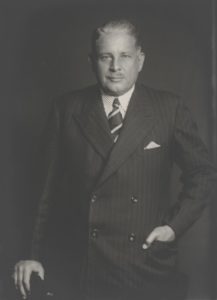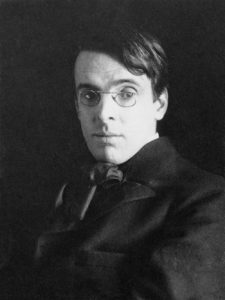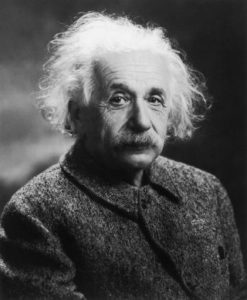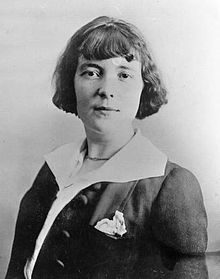We have decided to create the most comprehensive English Summary that will help students with learning and understanding.
The Lost Child Summary in English by Mulk Raj Anand
The Lost Child by Mulk Raj Anand About the Author
Mulk Raj Anand was one of the first Indian writers who wrote in English and gained popularity at an international scale. He produced a remarkable body of work that contains several short stories, novels and essays. Anand was bom in Peshawar and his father was a coppersmith. Anand was a highly educated man; he graduated with honors from Punjab University and then went to University College, London. While studying in England, he worked at a restaurant to finance his education. He went on to earn a PhD from Cambridge University. This was also the time when he became involved in India’s struggle for independence.
He first gained popularity for his novels, Untouchable and Coolie. Among his other notable works is a trilogy consisting of The Village, Across the Black Waters and The Sword and the Sickle. Anand wrote extensively about the lives of the poor, oppressed Indian people and about social evils like the caste system, untouchability and communalism. Through his empathetic portrayal of the lives of the common Indian people, he provided stark social commentaries on the structures of society. Anand is regarded as one of the founding figures of Indian English literature.
| Author Name | Mulk Raj Anand |
| Born | 12 December 1905, Peshawar, Pakistan |
| Died | 28 September 2004, Jehangir Hospital, Pune |
| Education | University of Cambridge (1929), University College London, Khalsa College |
| Awards | Sahitya Akademi Award for English Writers, Padma Bhushan |
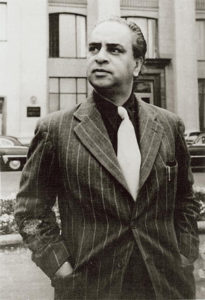
The Lost Child Summary in English
The story is set during a spring festival. The road to the fair is full of people. An excited little boy is running alongside his father. He watches the toys in the shops with wonder and his parents tell him to hurry up. The child goes to his parents and feels the urge to tell his parents that he wants a toy, though he knows from the look on their faces that they will refuse. His father gives him a strict look while his mother gently tries to distract him by showing him the flowering mustard field. The child then begins chasing dragonflies and his mother has to call him back to the footpath. He walks with his parents for a while till once again, he becomes distracted by the insects and worms on the footpath. His parents call him from under the shade of a grove where they are seated and he runs towards them.
As he enters the grove, flowers begin to fall upon him and he begins collecting petals. Then he hears doves cooing and he runs towards his parents, dropping the petals and looking for the dove. He begins running around a banyan tree. His parents pick him up and take a narrow, winding footpath through the mustard fields to the fair. As they approach the village, the child sees that a huge crowd is gathering at the fair. He is both frightened and fascinated. The child sees a sweetmeat seller’s shop stacked with many coloured sweets. He murmurs that he wants to have a burfi—his favourite sweet. But he knows that his parents will call him greedy if he demands a sweet, so he does not wait for their answer. He then sees a flower-seller selling garlands of gulmohur flowers. He is very attracted by the flowers and softly murmurs that he wants one. But he knows his parents will say that the flowers look cheap, so he does not wait for an answer from them and walks ahead.
Next, the child sees a man selling balloons of many colours. He wants to get them all. But he knows his parents will say he is too old to play with balloons and so he walks ahead. Then he sees a snake charmer playing music to a snake that is coiled in a basket. The child knows that his parents will scold him for listening to such coarse music and so he walks on ahead.
Then the child comes upon a merry-go-round. He sees grownups and their children on it laughing and having fun. Finally, he requests his parents for a turn at the merry-go-round, but he receives no reply. He realises that his parents are nowhere around him. He panics and starts running around crying for his parents. He becomes overcome with fear and runs around, crying out for his parents. His yellow turban comes off and his clothes become dirty.
Soon, he exhausts himself and starts sobbing. He looks around for people dressed in yellow, but he cannot find his parents anywhere. He then runs to a shrine, walking under people’s legs, sobbing for his parents. The crowd thickens near the temple’s gates. Here, men are pushing each other and the child struggles to get ahead. He shrieks for his parents and a man notices him and lifts him up into his arms. He shields the child and takes him
away from the crowd. The man asks him who he is and how he came to be there. The child now cries even more bitterly and weeps for his mother and father.
To soothe the crying child, the man asks him if he wants to ride the merry-go-round. But the child says that he just wants his parents back. He then takes him to the snake charmer and tells him to listen to the music. But the child puts his hands over his ears and cries even louder. He keeps saying that he wants his parents.
The man offers to buy him a multi-coloured balloon from the balloon seller, but the child turns his eyes away from the balloons and asks for his parents. The man then takes him to the flower-seller and asks if he would like to wear a garland of fragrant flowers. The child turns his nose away and continues sobbing for his mother and father.
Lastly, the man brings the child back to the sweet-seller, hoping to console him with a sweet. He asks the child to choose a sweet. But the child continues to sob and says that all he wants are his mother and father.
The Lost Child Title
The title beautifully captures the reactions of the child to the world around him before and after he is lost.
The lesson is about an event that takes place in the life of a child who gets lost in a fair. It expresses the fears, anxieties and worries of this very young child who is separated from his parents due to his fascination with the world around him. When he gets lost and separated from his parents, however, his fascination with the world around is also lost.
The Lost Child Theme
The underlying theme of the story “The Lost Child” is the universality of a child’s desire for everything that he claps his eyes on. All that the child witnesses—from the toys lining the street, to the dragon flies in the mustard field, to the snake swaying to the tunes of a snake charmer’s pungi—obsesses the child. It is a visual assault on his senses. He looks at everything in wonder, his senses almost rejoicing at being alive. His parents on the other hand are like a parental control filter, making him abstain him from the lures of the illusionary world as if secretly knowing that what he needs most is something else entirely. They offer a quiet reminder that the child must learn to prioritise what is important and what is not in life.
In the end when the child loses his parents he understands what his parents’ silent gestures and reprimands were trying to teach him. He realises now that what he wanted most was his parents. He continuously refuses everything that the kind stranger offers to console him with—the very same things he was goading his parents for moments ago. Within minutes his life changes and offers him an entirely new perspective of looking at life and understanding what is truly important.
The Lost Child Setting
The story is set in an Indian village around the time of Independence. Set during springtime, the story offers a look into a period of time in history when changing seasons were celebrated with fairs, which offered simple pleasures like the sweetmeat seller, the flower seller, the snake charmer, a balloon seller, etc. The time period is emphasised further by mention of the modes of transportation, such as people riding on horses on the roads, while Others rode in the bamboo and bullock carts.
The Lost Child Message
The story highlights the value of relationships over material goods. The child realises the true value of his parents once he is separated from them. It also sheds light on the universal fear of children and parents of getting separated from one another and the result of such a calamity as seen from the eyes of a little child.
The Lost Child Characters
There are four characters without any names—the child, his parents, and the unknown man who tries to console the lost and sobbing child.
The child is very young and full of joy and excitement at the thought of visiting the fair. He is attracted by all the sights and sounds of the fair. Like all children of his age, he wants whatever catches his fancy, whether a sweetmeat or a dragonfly. He is however quite obedient and disciplined as he does not throw a tantrum when his parents don’t give him any of the things that he demands. In the end he dissolves into tears asjie realizes that he has lost his parents and makes a valiant effort to look for them, almost getting trampled underfoot by the people at the temple before he is rescued by a stranger. The same things that he had desired a little while ago lose all meaning when he gets separated from his parents.
The Parents
The father of the child appears to be a strict disciplinarian who does not give into the demands of the child for toys and sweets. He is the head of the family and both his wife and child do not question his decisions. In fact he seems to be leading the family, expecting them to follow him without dawdling.
The mother has been described as a typical loving mother who tries to soften the disappointment of the child by diverting his attention from the objects that he wants to possess. She seems to be tom between her husband and her child as she struggles to keep pace with her husband and at the same time keep her child from straying. At some point her attention seemed to have wavered, when her child gets separated from her.
The stranger appears to be a kind hearted man who rescues the lost child from under the feet of people thronging outside the temple. He tries hard to stop the child from weeping by offering him all the goodies at the fair and appears to be genuinely concerned to restore the child to his parents.
The Lost Child Summary Questions and Answers
Question 1.
What are the things the child sees on his way to the fair?
Answer:
He sees people gaily dressed, some on horses, some in bamboo or bullock carts. He also sees toys, dragon ‘flies, insects, worms, flowers, and doves on his way to the fair.
Question 2.
Why does the child lag behind?
Answer:
He lags behind because he is attracted by several of the things he sees on the way like toys, sweetmeats, dragonflies, flower garlands, the snake charmer and the roundabout.
Question 3.
What are the things that he wants at the fair?
Answer:
At first he wanted a burfi, then a garland of gulmohur flowers, next some colourful balloons, after that he was attracted by the snake charmer and finally he wanted a ride on the roundabout.
Question 4.
Why does the child move on without waiting for his parents’ answer whenever he asked for things that attracted him?
Answer:
He moves on without waiting for an answer because he knew they would not pay attention to his demands or give him what he asked for.
Question 5.
When does the child realize that he had lost his way?
Answer:
At the roundabout, when he turned to request his parents to allow him to sit on the ride, he did not get any reply. When he looked around for them he realized he had strayed away from his parents and lost his way.
Question 6.
How has the lost child’s anxiety and insecurity been described?
Answer:
His anxiety and insecurity have been described through his reaction to his realisation that he was lost. Tears rolled down his cheeks, his throat became dry, his face flushed and convulsed with fear and he ran in all directions in panic without knowing where to go.
Question 7.
Why does the lost child lose interest in the things that he had wanted earlier?
Answer:
He lost all interest in the things that he had wanted earlier because he felt fearful and insecure at being separated from his parents and all he wanted was to be reunited with them.
Question 8.
What do you think happens in the end? Does the child find his parents?
Answer:
This question can be answered in either way –
In my opinion the child is reunited with his parents who are also searching for him and find him crying in a stranger’s lap.
Or
No, the child is not reunited with his parents but is taken by the man who finds him and is brought up by him.
Question 9.
Why was the fair being held in the village?
Answer:
It was being held to celebrate the spring season.
Question 10.
What tells us that the little boy was excited about going to the fair?
Answer:
The fact that the little boy has been described as “brimming over with life and laughter” tells us that he was happy and excited to be going to the fair.
